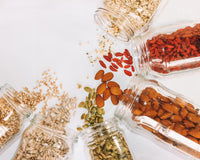When we look at the word Risotto, many of us will think of its appearance on a restaurant menu. It begs the question, of how many people actually consider what it actually contains, or how it is actually made. Risotto, funnily enough, is quite a simple and convenient meal that is packed with flavour and fullness.
Where does Risotto come from?
Risotto is a traditional Italian rice cuisine that has simple, but specific ingredients. Risotto has deep roots in northern Italy where there lay plenty of rice fields.
There are early recipes that go all the way back to the 14th and 15th century, with many Italian recipes, including rice mixed with eggs and meat and then being boiled in broths. Perhaps this is where the concept began?
Cooking Risotto
The rice dish is created through heating rice in a combination of liquids and every so often adding more and more of them, till the rice has completely absorbed everything.
What Broth to Add?
In terms of what consommé you create for a risotto, it all depends on what flavour you are going for, and/or perhaps what wine you might have in the cupboard.
If you are trying to make a traditional version of the dish, it is important to start with white or red wine when absorbing your rice in a liquid. Do not rinse the rice before cooking it, as it will lose its firmness as the cooking progresses.
What Rice to Add?
Rice as a staple ingredient, originally came from Asia and eventually arrived in Italy and Spain. Parts of Italy with more humid weather make for great conditions for rice fields. Regions such as: Piedmont, Veneto, Vercelli, Novara, Pianura Padana, and Lombardy.
With these regions, comes short-grained rice, which is the pick for risotto. This is because it tends to be starchy and plumpy. This is great for the classic creamy taste and texture we all love from professional, restaurant style risottos.
Arborio Rice
Some risotto styled, Italian rice to look out for are: Risaie, Carnaroli, and Vialone nano rice. However, the favourite and perhaps best risotto rice is Arborio rice. Organic arborio rice tends to absorb higher amounts of liquid compared to others and contains amylopectin starch, which is a natural starch that adds a nice chewiness and firmness to the dish.
Hints and Tips
Once the rice has absorbed the wine, you can eventually add a stock broth of your choice, ladle by ladle to the rice. An alternative for alcohol in your risotto can be only using stock cubes for the main flavouring.
REMEMBER: Always keep the temperature between low and medium for a slow but successful cook.
Its other base starts with the onion family. Either an onion, shallot, or leek works. You simply ‘toast’ your chopped ingredient up and mix with butter, or extra virgin olive oil and then add your creamy rice to the pan.
You could multitask and cook this all at the same time, but if you are a perfectionist and want the risotto to have the textbook texture, take your time and do everything step by step.
REMEMBER: Keep an eye on the risotto when it cooks, don’t over-stir it, but equally don’t let it burn.
Final Touches
For extra creaminess, you can add a teaspoon of butter and a sprinkle of parmesan into the dish right at the end. But make sure you turn the heat off and really allow the flavours to sink in. This adds a real traditional Italian spark to the end of your dish.
How to serve risotto?
With the effect of globalisation, the concept of risotto has been adapted to be completely versatile in the kitchen. It can be cooked to make many different consistencies which allows for many different risotto recipes. Everyone has a unique palate for texture and risotto can work around that.
Italian Risottos
Many Italian recipes will throw leftover vegetables into the mix for a cheap and cheerful meal. Cabbages, carrots, courgettes, mushrooms, peas, and beans can add fibre and protein to the dish. Adding vegetables like pumpkin or butternut squash can also add another level of sweetness to the filling, homely meal.
Traditionally, Italian risottos are either served alone, or with the side dish ‘Ossobuco’. Ossobuco is a beef cross-cut shank mixed in with vegetables in a wine-infused broth.
Spanish Risottos
Paella is a Spanish take on risotto. Popular in the coastal areas of Spain, this version of risotto tends to fuse lots of seafood and spice together. This risotto differs from the Italian cuisine as it is baked after its main toasting, and the liquid is thrown in all at once rather than absorbed over a longer amount of time.
Organic Risotto
For a fresher, healthier meal, however, try to stick with organic rice, as it will be a safer option for lower pesticide residues and can aid digestion as it is produced more naturally compared to other shop bought products.
Luckily there aren’t many rules with what you can add to a risotto at home. Though different regions have their own strict takes, its versatility in the kitchen can cater to different palates. Meats, fish, vegetables, or beans. Take your pick.






